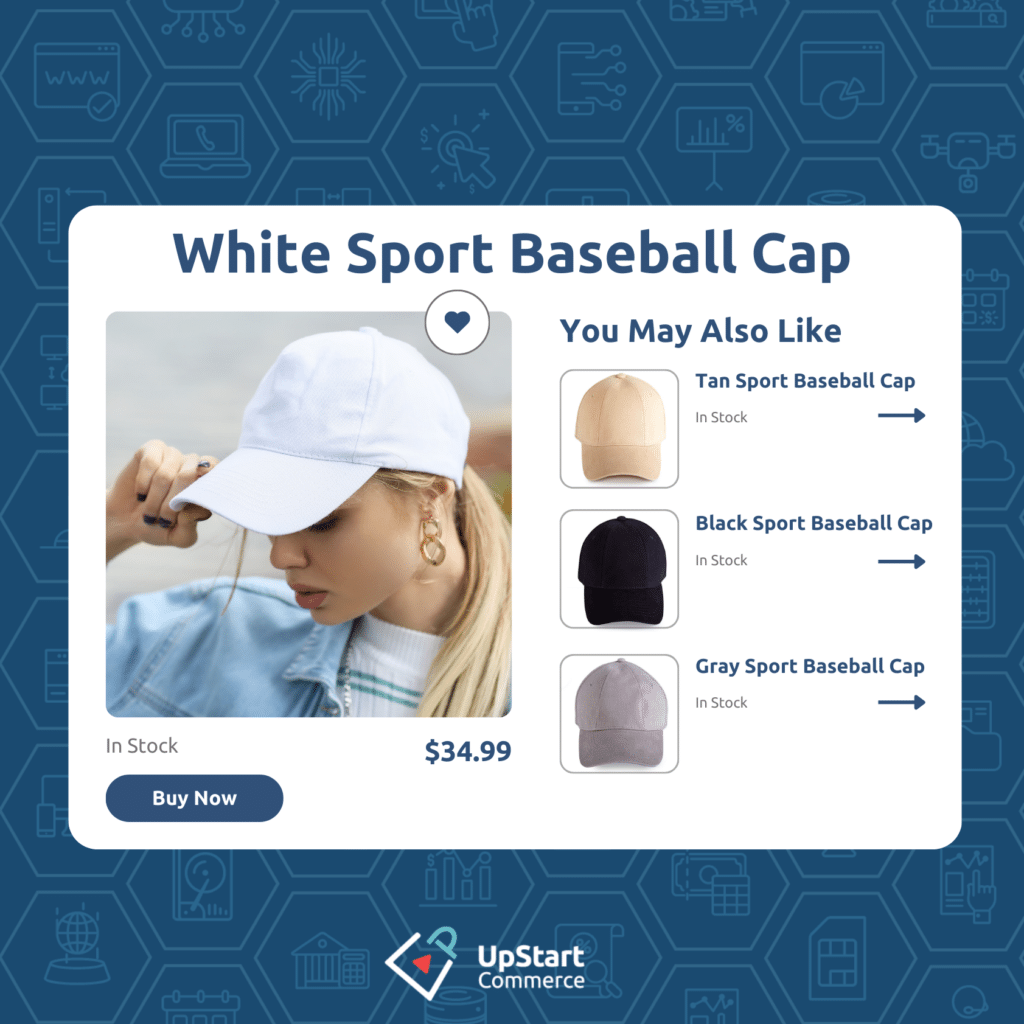Ecommerce customers are bombarded with choices, and capturing their attention, and converting them into loyal buyers requires a strategic approach. Here’s where optimizing ecommerce product pages comes into play. Creating engaging, informative, and personalized experiences can significantly boost your ecommerce revenue.
UpStart Commerce allows businesses to achieve seamless integrations and unlock the full potential of their ecommerce operations. Join us as we take a road down to the strategies that help boost retail revenue and elevate the online shopping experience.
Build Engagement
Traditional static product pages with a single image and description don’t hold shoppers’ interest anymore. Interactive product content like 360-degree product views, zoom functionality, and AR experiences allows customers to virtually “touch and feel” your products, creating a deeper connection and increasing purchase confidence. These immersive experiences grab attention and give customers a real sense of what they’re buying.
User-generated content (UGC) is another powerful tool for boosting engagement. Showcase customer photos and videos using your products on your product pages. This builds social proof while building a sense of community. Consider integrating platforms like Instagram or TikTok to showcase relevant UGC.
Leverage Trends
Conversational commerce platforms like chatbots and live chat facilitate real-time customer interaction, addressing questions and concerns instantly. This leads to a smoother shopping journey.
Shoppable social media is another powerful trend to leverage. Platforms like Instagram and Pinterest allow customers to purchase products directly within the app. Experimenting with shoppable features and partnering with social media influencers can help retailers reach new audiences.
That’s for the technology, what can you do with your products?
Prominently featuring trending products on product pages helps attract trend-conscious shoppers. For example, during the holiday season, you might curate a collection of “must-have gifts” to highlight popular items with a sense of urgency. The anticipation around the product offerings and the timeline creates a sense of anticipation that drives sales.
Read More: The Benefits of Ecommerce Promotions in 2024
Hyper-Personalized Experiences
Customer behaviors can help create personalized product recommendations. AI-powered recommendation engines analyze customer behavior and past purchases to suggest relevant products to help them discover similar products they may be interested in.
Personalize the ecommerce experience further by tailoring product descriptions and visuals based on user demographics and browsing history. For example, highlight different product features depending on the user’s needs. This level of personalization helps customers connect with products.

Create a Sense of Urgency
Scarcity marketing can be a powerful tool for driving sales. Limited edition products and exclusive releases create a sense of urgency and excitement that encourages customers to purchase before it’s too late. Restate the limited availability of these products on your product pages to build customer interest.
This strategy can be particularly effective during popular shopping periods and for highly anticipated new product launches. Consider offering pre-orders to exclusive releases for return customers to further build brand loyalty.
Strength in Numbers
Brand collaborations allow you to tap into a new customer base and leverage the established reputation of your partner brand. Choose retailers who share your brand values and target audience for maximum impact.
Co-create unique product lines or limited-edition collections as part of your brand collaboration. Promote these collaborations on your product pages and social media channels.
Optimizing Ecommerce Product Pages for Success
As we look to the future of ecommerce, one thing is clear: the potential for enhanced product pages to boost retail revenue is limitless. UpStart Commerce is setting the bar high for what’s possible in ecommerce.
In the end, it all comes down to one simple truth: optimizing ecommerce product pages elevates the entire shopping experience for customers—and that’s a recipe for success.
